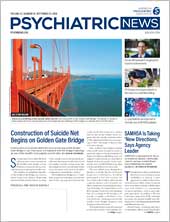Ducklings don’t swim: they glide. Although their elegant swimming appears effortless, underneath the surface they frantically paddle their feet, awkwardly thrashing at the water below.
In college, students can appear to glide throughout their day much like ducklings: balancing academics, internships, social obligations, and family responsibilities without a hint of struggle or distress. However, much like the thrashing of duckling feet, feelings of anxiety and self-doubt aren’t easily observed among students who appear to handle any adversity that college has thrown at them.
The term “
duck syndrome” has been used to describe students’ abilities to appear superficially calm while suppressing any distress, depression, or anxieties of self-doubt. It is commonly observed among adolescents and college students, particularly those in high-achieving environments. What is particularly concerning about these types of behaviors is that they can create an atmosphere that leads others to be hesitant to speak out about their own difficulties, particularly those related to mental health.
The impression of achievement without struggle or effort can be intensified even further with the use of social media, which allows users to post carefully curated images to represent their lives in a way that they would want others to know it. For example, students are much more likely to post images of travel (enhanced with a filter, of course) and socializing with peers than they are to post images of their late nights in the library or the rejection letter from their long-sought-after internship. With maladaptive viewing, students may become overwhelmed with their peers’ deliberate representation of academic and social successes on social media and believe they are the only ones awkwardly paddling and struggling in college.
The 2014 suicide of University of Pennsylvania freshman Madison Holleran was a disheartening contrast between reality and its representation on social media. Madison’s Instagram account remains open to public viewing to allow an appreciation of the life she lived, as well as to raise awareness about the silence and stigma associated with suicide and how life on social media may not accurately reflect the struggles that one may be going through.
College is a high-risk period for the development of mental health conditions, and young men and women in their teens and 20s are already at an elevated risk regardless of college attendance. According to research reports, bipolar disorder, anxiety disorders, and schizophrenia have the highest rate of development during this vulnerable period of identity and development, and the pressures of academics, new relationships, substance use, risky behaviors, and social comparisons of college can exacerbate or trigger mental health conditions.
More and more students are seeking help, and university counseling centers are struggling to keep up. Between 2009 and 2015, the number of students visiting counseling centers increased by about 30 percent on average, while enrollment in universities grew by less than 6 percent. Only half of four-year universities have an on-campus psychiatrist, and many universities have waiting periods of up to four weeks for an initial evaluation, especially around difficult times of the academic year such as midterms and finals.
Although the need for increasing mental health resources is evident, a cultural shift of openness and honesty can help mitigate stigma and improve the atmosphere of many undergraduate institutions. Embracing the idea that everyone is struggling together would allow for a culture of self-reflection and transparency and promote healthy dialogue about mental health. Rather than pretending to effortlessly glide across the pond, students should feel comfortable sharing their struggles, as paddling and thrashing under the water are difficult—and even more so when you believe you are the only one doing it. ■

